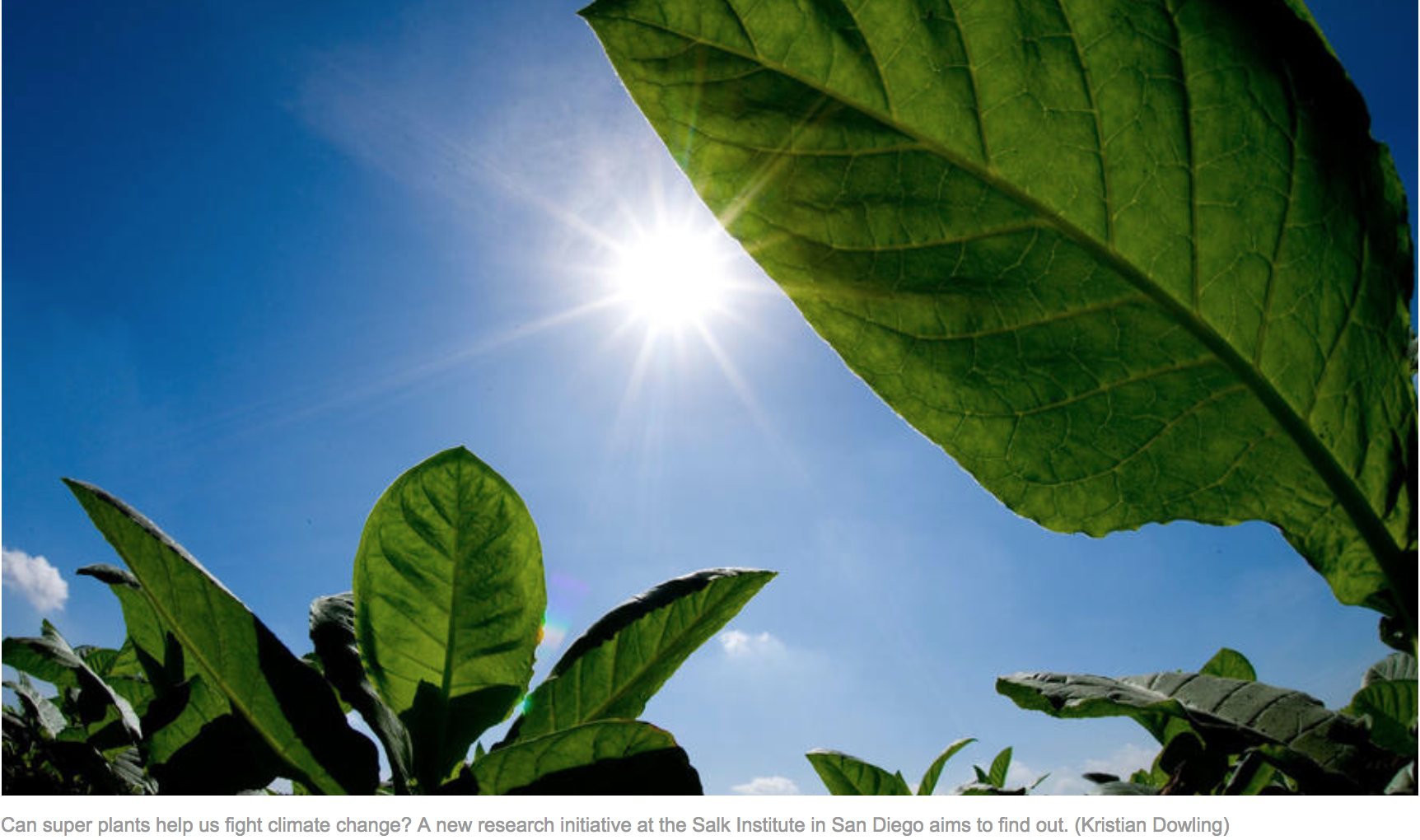Ever since humans first walked the earth, we have relied on plants for our survival.
They provide us with food, shelter, medicine and even the oxygen we breathe. Now, a team of scientists is wondering if they can protect us from climate change as well.
Friday, researchers at the Salk Institute for Biological Studies in San Diego launched a new initiative to improve on the ability of plants to suck carbon dioxide out of the atmosphere and store it deep in the soil. They call it “Harnessing Plants.”
“There are a lot of geoengineering efforts to come up with ways of pulling carbon dioxide out of the air,” said Joseph Noel, a chemical biologist at Salk who is working on the project. “Plants do this anyway, so why not try a biological solution as well.”
During the growing season, plants pull more than 100 gigatons of carbon out of the atmosphere through the process of photosynthesis. But much of that carbon is eventually released back into the air as C02 — either because we and other animals eat the plants or burn them, or they return to the soil where bacteria and fungi cause them to decompose.
The effects of this yearly cycle are measurable on a global scale. The concentration of carbon dioxide in the atmosphere consistently drops during the Northern Hemisphere’s spring and summer, when plants are growing across the large land masses of North America, Europe, and Asia. When winter descends and fewer plants are growing and others are decaying, the C02 concentrations rise once again.
One of the Salk team’s goals is to find a way to help plants do a better job of taking the carbon they absorb from the atmosphere and keeping it in the soil.
They already have a lead on how to make this happen.
All plants make a substance called suberin that protects their roots. You are likely familiar with suberin even if you don’t know it. It’s the same material as the cork in your wine bottle or on your corkboard. It’s also the material that makes up the skin of a potato.
The unique properties of suberin help plants in many ways, said Noel. It makes them more tolerant of drought and paradoxically, more tolerant of floods. Plants that grow in salt water produce a lot of suberin because it helps regulate how much salt is absorbed by their roots. It also serves as a protection against disease.

Hi! I am a robot. I just upvoted you! I found similar content that readers might be interested in:
http://www.latimes.com/science/sciencenow/la-sci-sn-climate-change-plants-20171117-htmlstory.html
Downvoting a post can decrease pending rewards and make it less visible. Common reasons:
Submit